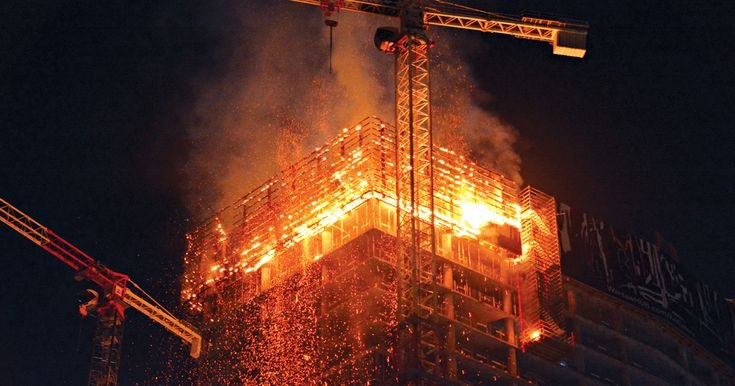Fire Stopping – Level 2
About this course
Fire Stopping – Level 2
This guide outlines the key components and steps for creating Level 2 Fire Stopping Modules, which are essential for maintaining fire compartmentation in buildings.
1. Introduction to Fire Stopping (Level 2)
Fire stopping is a passive fire protection measure designed to seal openings and gaps in fire-rated walls, floors, and ceilings to prevent the spread of fire, smoke, and toxic gases.
Level 2 Fire Stopping typically involves:
Intermediate fire resistance applications
More complex penetrations than Level 1
Compliance with building codes and fire test standards
2. Key Components of Fire Stopping Modules
To create effective fire stopping modules, consider:
A. Materials & Systems
Fire-rated sealants (intumescent & non-intumescent)
Firestop mortars & putties
Fire-resistant boards & wraps
Pillows & blocks (for larger openings)
Collars & wraps (for pipes & cables)
B. Common Penetration Types
Electrical conduits & cables
Plumbing pipes (metal, plastic, etc.)
HVAC ducts & dampers
Structural steel penetrations
C. Fire Test Standards & Compliance
ASTM E814 / UL 1479 (Fire Tests of Penetration Firestops)
BS 476 (UK Standards)
EN 1366 (European Standards)
Local building codes (e.g., IBC, NFPA)
3. Steps to Create Fire Stopping Modules
Step 1: Assess the Penetration
Identify the type of barrier (wall, floor, ceiling).
Measure the size and type of penetration.
Check fire resistance rating required (e.g., 1hr, 2hr).
Step 2: Select Appropriate Firestop System
Choose materials based on:
Type of penetrating item (metal pipe, plastic pipe, cables).
Size of the opening.
Required fire and smoke rating.
Step 3: Prepare the Opening
Clean the area (remove debris, dust, grease).
Ensure proper fit of firestop materials.
Step 4: Install Firestop System
Apply sealants, mortars, or wraps as per manufacturer instructions.
Install collars or pillows if required.
Ensure full encapsulation of penetrations.
Step 5: Inspection & Certification
Verify compliance with fire test standards.
Document installation with photos/reports.
Conduct smoke and fire tests if necessary.
4. Best Practices for Fire Stopping
✔ Follow manufacturer guidelines for each product.
✔ Avoid mixing incompatible materials (e.g., some sealants degrade plastic pipes).
✔ Regularly inspect and maintain firestop systems.
✔ Train installers on proper techniques.
5. Common Mistakes to Avoid
❌ Using non-fire-rated materials (e.g., standard foam or silicone).
❌ Leaving gaps or incomplete seals.
❌ Ignoring movement in pipes/cables (use flexible firestop solutions).
❌ Failing to document installations for compliance.
Comments (0)
Fire stopping is a vital passive fire protection method that ensures the integrity of fire-resistance-rated walls and floors by sealing openings and joints. It prevents fire and smoke from spreading between compartments and buildings, giving occupants more time to evacuate and potentially reducing fire damage. Fire stopping is crucial for maintaining the fire-rated integrity of a building and is a fundamental aspect of compartmentation.
Fire stopping involves sealing openings and penetrations in buildings to prevent fire spread, smoke, and heat from moving between compartments. Key components include: fire-resistant sealants, intumescent materials, fire-rated boards, and specialized devices like fire collars. These materials and devices are used to seal gaps around pipes, cables, ducts, and other penetrations, maintaining the integrity of fire-rated walls and floors.
To effectively create fire stopping, you need to seal openings and gaps in building structures to prevent the spread of fire, smoke, and heat. This involves understanding fire ratings, selecting appropriate materials, and ensuring proper installation.
Effective fire stopping involves sealing gaps and openings in fire-rated walls and floors to prevent fire and smoke from spreading. It's crucial to use the right materials for the specific application and ensure proper installation, including sealing annular gaps and adhering to manufacturer instructions.
Common firestopping mistakes include using incorrect materials or products, failing to maintain or inspect firestop systems, and neglecting proper installation techniques. These errors can compromise the effectiveness of firestop measures, potentially leading to a faster and more extensive fire spread.
Effective fire stopping implementation is crucial for preventing the spread of fire and smoke within a building, protecting occupants, and mitigating property damage. It involves sealing gaps and joints in fire-rated walls and floors where penetrations occur, such as pipes, cables, or ducts, to maintain the integrity of the fire barriers. Proper implementation requires careful consideration of fire safety regulations, the use of appropriate materials, and competent installation by qualified professionals.





